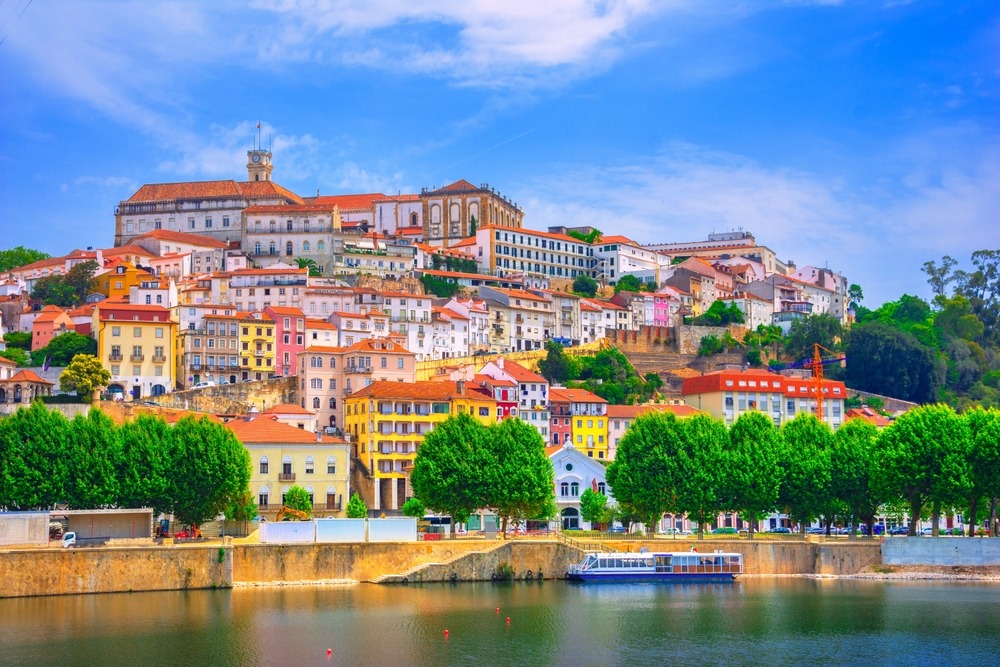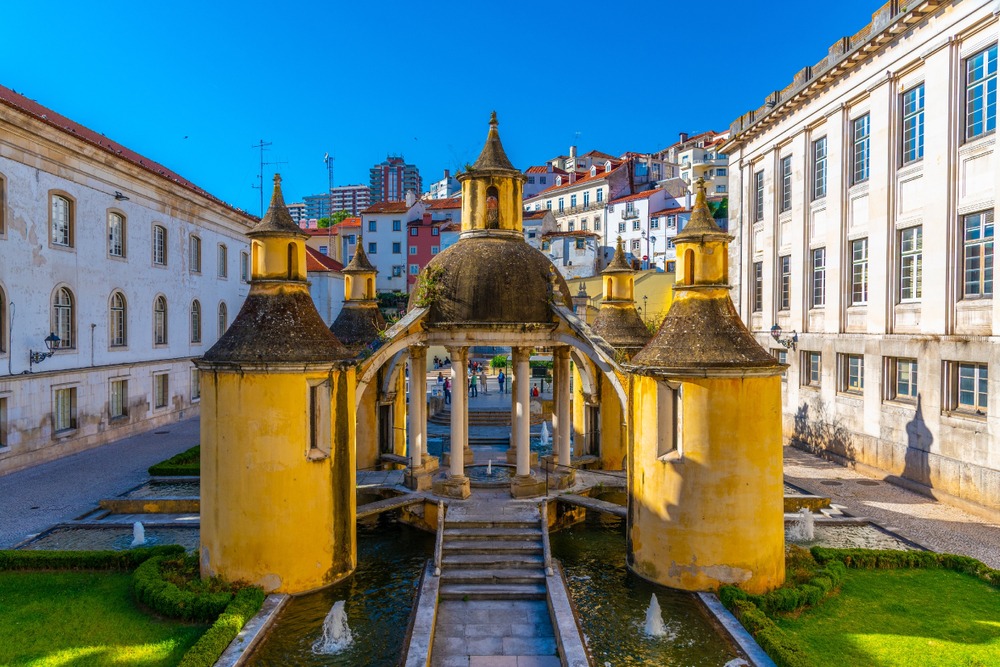Coimbra, Portugal: A Historical and Cultural Treasure with 25 Must-See Attractions
History of Coimbra
Perched along the banks of the Mondego River and near the Douro River, Coimbra is one of Portugal’s most storied cities—a place where centuries of royalty, religion, and scholarship have shaped its vibrant identity. Originally a Roman settlement known as Aeminium, Coimbra’s strategic location made it an important military outpost along the road between Lisbon and Braga. With the fall of the Roman Empire, the city endured a succession of rulers, including the Visigoths and Moors, before being reconquered by Christian forces in the 11th century during the Reconquista.
Coimbra rose to national prominence when it became the capital of Portugal in 1139 under the reign of King Afonso Henriques, the nation’s first monarch. Though the capital was later moved to Lisbon in the 13th century, Coimbra retained a position of prestige, especially after the founding of the University of Coimbra in 1290. This university, one of the oldest in Europe, became a vital center of learning and culture, attracting scholars from across the continent and deeply influencing Portuguese intellectual life for centuries.
The city grew around its academic institutions, fostering a culture where tradition and innovation coexist. Gothic monasteries, Manueline churches, and Baroque libraries blend seamlessly with the cobbled streets and student rituals that define Coimbra’s unique character. Today, it remains a symbol of Portugal’s historical continuity and educational excellence, often referred to as the “city of students.”

Top 25 Attractions in Coimbra
-
University of Coimbra – A UNESCO World Heritage Site and the heart of the city, the university’s hilltop campus offers centuries of academic history and breathtaking views.
-
Joanina Library (Biblioteca Joanina) – An exquisite Baroque library housing thousands of rare books, renowned for its ornate woodwork and resident colony of bats.
-
Royal Palace of Alcáçova – The former royal residence turned university facility, featuring beautiful architecture and the Sala dos Capelos where doctoral defenses take place.
-
Old Cathedral of Coimbra (Sé Velha) – A Romanesque fortress-like cathedral dating back to the 12th century, notable for its austere stone exterior and elaborate interior carvings.
-
New Cathedral of Coimbra (Sé Nova) – Built by the Jesuits in the 16th century, this church blends Mannerist and Baroque styles and now serves as the city’s main cathedral.
-
Santa Cruz Monastery – Final resting place of Portugal’s first two kings, this monastery is rich in Manueline art and religious significance.
-
Monastery of Santa Clara-a-Nova – Constructed after the original riverside monastery was repeatedly flooded, it now houses the tomb of Saint Queen Isabel.
-
Ruins of Santa Clara-a-Velha – The atmospheric remains of the original 14th-century convent, partially submerged by the Mondego and now open for guided tours.
-
Portugal dos Pequenitos – A charming theme park featuring miniature versions of Portuguese monuments and traditional houses, perfect for families and cultural explorers alike.
-
Botanical Garden of the University of Coimbra – One of the oldest and most diverse botanical gardens in Europe, showcasing plants from across the globe.
-
Machado de Castro National Museum – Housed in a former bishop’s palace, this museum includes a Roman cryptoporticus and an outstanding collection of sculpture and religious art.
-
Mondego Riverwalk (Parque Verde do Mondego) – A scenic riverside promenade ideal for walking, cycling, or relaxing by the water.
-
Arco de Almedina – The medieval gateway to the old town, once the entrance to the Moorish citadel, still standing as a symbol of the city’s historic core.
-
Praça 8 de Maio – A bustling square near the Santa Cruz Monastery that connects many of the city’s historic and modern attractions.
-
Science Museum of the University of Coimbra – A fascinating display of scientific instruments, natural history, and academic curiosity spread across several buildings.
-
Pedro e Inês Footbridge – A modern architectural landmark named after Portugal’s famous tragic lovers, offering pedestrian access and lovely river views.
-
Quebra Costas Stairs – This steep, narrow staircase connects the upper and lower towns and is lined with cafes, shops, and lively nightlife.
-
Fado ao Centro – A cultural center where visitors can experience Coimbra’s unique version of fado music, performed exclusively by men and steeped in student tradition.
-
Coimbra City Hall (Câmara Municipal) – A stately building in the heart of town that reflects 19th-century architectural grandeur.
-
University Tower (Torre da Universidade) – This 18th-century bell tower is one of Coimbra’s most recognizable landmarks and offers sweeping city views.
-
Aqueduto de São Sebastião (Arcos do Jardim) – An impressive 16th-century aqueduct that once supplied the city’s water and now adds historic flair to the landscape.
-
Chapel of São Miguel – Located on the university grounds, this chapel boasts a spectacular Baroque organ and detailed azulejo tilework.
-
Casa-Museu Bissaya Barreto – A museum housed in a noble residence with eclectic collections of art, ceramics, and furniture.
-
Lousã Mountains (Serra da Lousã) – Located just outside Coimbra, these forested hills are perfect for day trips, hiking, and exploring traditional schist villages.
-
Penedo da Saudade – A romantic viewpoint and small park where lovers and poets have long inscribed messages of longing and memory.

Coimbra is more than just a university town; it’s a living museum where each monument, library, and alleyway tells a story. Its deep historical roots, coupled with a vibrant cultural present, make it an essential destination for any traveler seeking to understand the soul of Portugal.
































